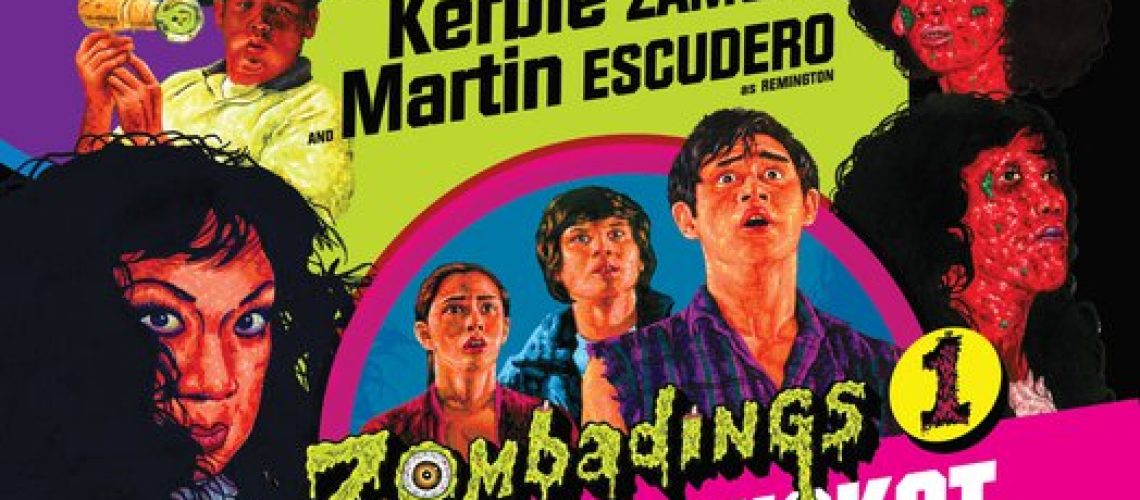The Philippines is home to more than a hundred languages (and that’s not counting the number of dialects). But there are only two official languages in the country: English and Filipino. The official languages, especially Filipino (a lot of which is based on the Tagalog language), is always the subject of debate. And both languages are arguably the products of a dominant culture enforcing its will on another: the former by Americans and the second by what could be considered the “mainland” in the Philippines, Manila.
In schools, we are taught to be fluent in one language or the other, but the mingling of both languages is discouraged (and in most cases, will count as an error). In English class, we’re not allowed to use Filipino. In Filipino class, we’re not allowed to use English. And yet, both Filipino and English are inevitably used in both classes. In actual practice, the mingling of several languages is the norm. For those who can speak both languages, this is usually called Tag-lish. In my community, since I am also ethnically Chinese, our variation is Chi-tag-lish, as we mix our version of Chinese (usually Hokkien) with Filipino and English. This phenomenon is not unique to the Philippines, and other countries will have their own variations. Take Singapore and Singlish, for example.
There is a significant dissonance between the written word and the spoken word, however. With the latter, society’s norm of segregating the languages can’t be enforced. With the former, however, the rules of the academe hold sway, and what is deemed publishable or grammatically correct are texts that exclusively use one language or the other. Outside of dialog, it’s taboo to use both English and Filipino. so you often end up with texts that read very differently from what gets spoken in reality. If authenticity is important to you as a reader, then our fiction is a significant step away from that actuality. If we look at all our style guides, it is clearly from the perspective of a monolingual speaker, when a lot of cultures aren’t monolingual. For example, here are rules such as italicizing “foreign” words (how can the word be foreign when we use it everyday?). In many ways, that is the triumph of a novel like The Brief Wondrous Life of Oscar Wao by Junot Diaz. It breaks those boundaries. It disproves the language rules that the dominant culture has established. And in many ways, it’s also a reminder of our many failings, because novels like The Brief Wondrous Life of Oscar Wao are the exceptions rather than the norm.
It also leads us to a discourse on translation. Why can’t everything be translated? The shortcomings of anything translated is that it is filtered through the editorial lens of the translator, and there will always be elements which can never be translated, whether this is a cultural nuance or a sentiment that simply does not exist in another language’s vocabulary. But another significant point is that it moves the burden from the reader to editor. I find it ironic, for example, that a lot of genre fans take meticulous care learning fictional languages like Tolkien’s Elvish or Star Trek’s Klingon, but will explode in a fit when it comes to smattering “foreign words” in fiction.
That’s not to say this intermingling of languages is totally absent. Aside from the spoken word (and the Philippines is a country rich in oral tradition, despite the imposition of recordable history), popular literature utilizes Taglish, be it soap operas, romance novels, or local comics. In my opinion, one of the important films in recent years is Zombadings 1: Patayin Sa Shokot Si Remington. While not without its flaws, it’s a movie that tackles taboo subjects like homosexuality and the malleability of gender, and it even utilizes Bekimon — a locally developed gay lingo. And of course, the title is itself a pun, combining the words zombies with badings (our term — usually derogatory — for gays).
On the opposite end of the spectrum, there are those who do not consider English a local language, when the nuances of Filipino English makes all the difference compared to Singapore English, Indian English, or even Japan’s English. It’s the nuances and the details that matter, and how it’s been appropriated locally, and while some might mock what some might call Engrish, it’s also a relevant part of culture.
The challenge is finding safe spaces for works that do not cater to a monolingual minority, but ones which explore the plurality and diversity of languages and dialects. And don’t look at me for solutions. I’m part of the problem. This entire post has been written in English, after all.










3 Responses